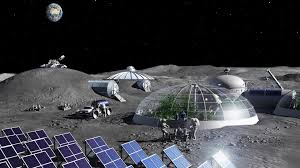
As humanity looks beyond Earth, scientists are exploring how life might survive and thrive in space. Sending seeds to the Moon is a critical step in understanding how plants can grow in extraterrestrial environments, which could pave the way for sustainable lunar habitats and future space colonization.
1. The Goal of Lunar Seed Experiments
The main objectives of sending seeds to the Moon include:
- Studying germination in low gravity: Understanding how lunar gravity (about 1/6 of Earth’s) affects growth.
- Testing radiation tolerance: Seeds are exposed to cosmic radiation to assess their resilience.
- Preparing for lunar agriculture: Developing crops that can grow in space for long-term missions.
- Exploring planetary colonization: Providing a foundation for growing food on the Moon or Mars.
These experiments are part of broader efforts to support human life beyond Earth.
2. How Seeds Are Sent and Tested
- Seed selection: Scientists choose hardy plants like Arabidopsis, lettuce, or wheat.
- Encapsulation: Seeds are placed in protective capsules to shield them from extreme conditions.
- Exposure to lunar conditions: Seeds may be placed on the lunar surface or in controlled environments within landers.
- Post-mission analysis: Scientists study germination rates, DNA integrity, and growth patterns after exposure.
This process helps determine which species could thrive in future space habitats.
3. Benefits of Growing Plants in Space
- Food security: Enables astronauts to cultivate fresh food on lunar bases.
- Oxygen production: Plants generate oxygen, supporting life in enclosed habitats.
- Psychological well-being: Gardening and plant life improve mental health for long-term space missions.
- Scientific insights: Understanding plant adaptation provides knowledge for extreme environments on Earth.
4. Challenges of Lunar Agriculture
- Radiation: The Moon lacks a protective atmosphere, exposing seeds to harmful cosmic rays.
- Low gravity: Reduced gravity affects water and nutrient movement in plants.
- Limited resources: Soil, water, and nutrients are scarce or must be artificially supplied.
- Temperature extremes: Lunar temperatures swing drastically between day and night.
5. The Future of Space Farming
As experiments continue, lunar and Martian agriculture could become feasible. Scientists envision:
- Bioregenerative life-support systems with plants producing food, oxygen, and recycled water.
- Self-sustaining greenhouses on the Moon or Mars.
- Space-adapted crop varieties designed to thrive in extraterrestrial environments.
These developments are essential for long-duration space missions and potential colonization.
Final Thoughts
Sending seeds to the Moon is more than a scientific curiosity—it’s a step toward ensuring humanity can survive and flourish beyond Earth. By studying plant growth in extreme conditions, scientists are laying the groundwork for a future where space agriculture supports explorers and settlers.